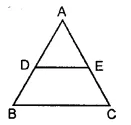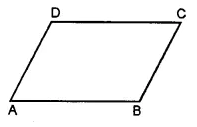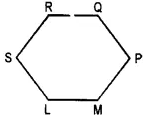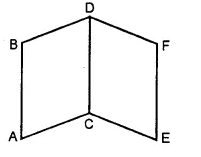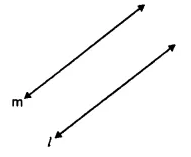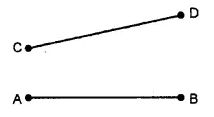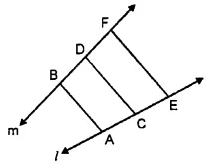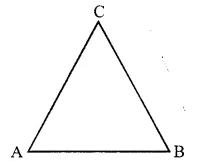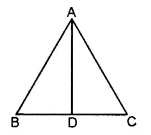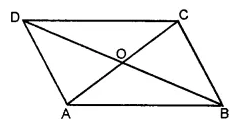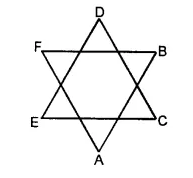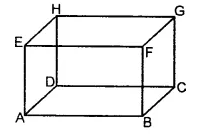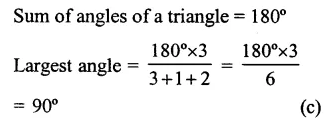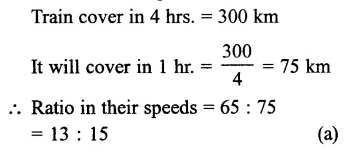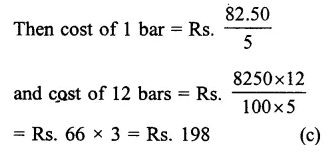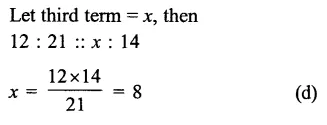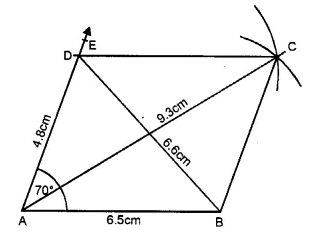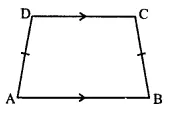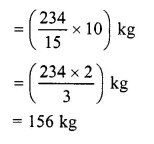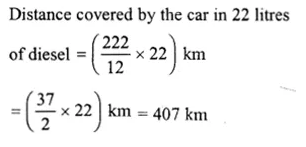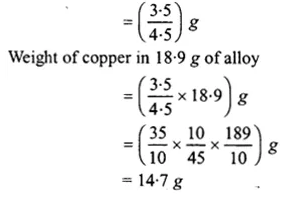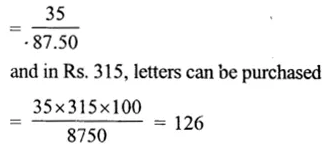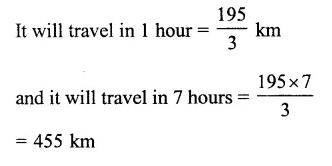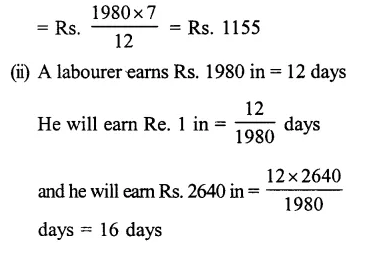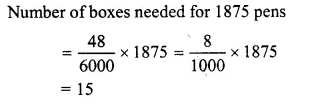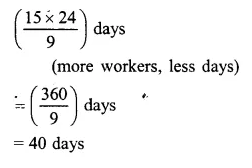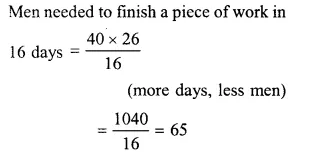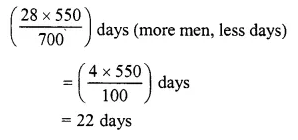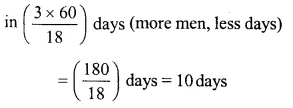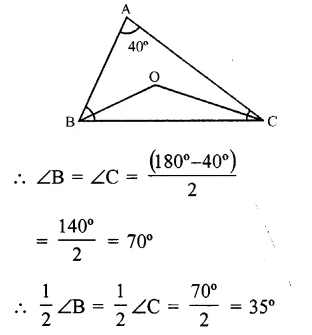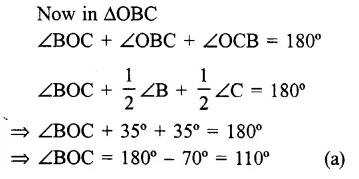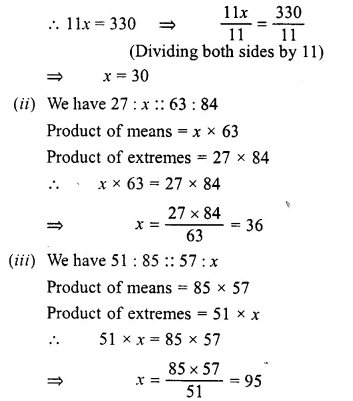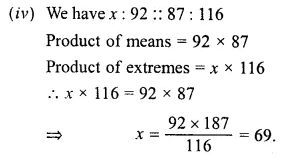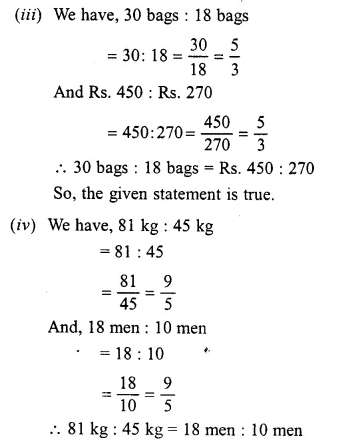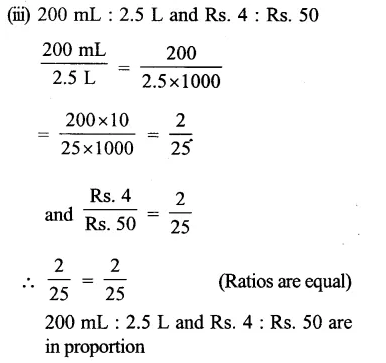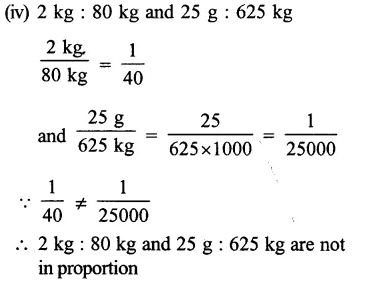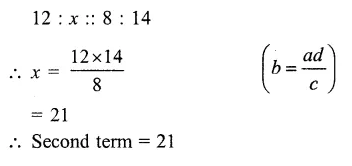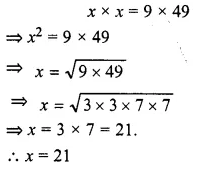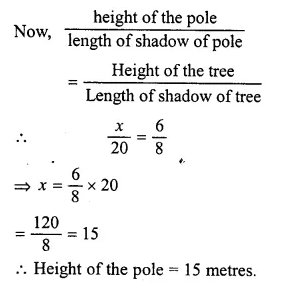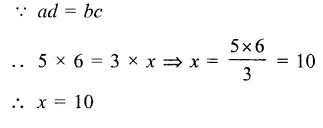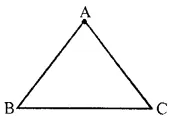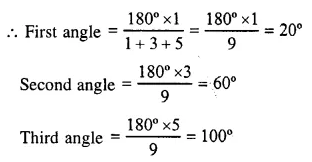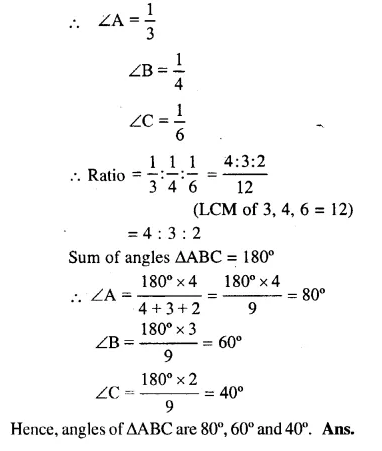RS Aggarwal Class 6 Solutions Chapter 13 Angles and Their Measurement Ex 13A
These Solutions are part of RS Aggarwal Solutions Class 6. Here we have given RS Aggarwal Solutions Class 6 Chapter 13 Angles and Their Measurement Ex 13A.
Other Exercises
- RS Aggarwal Solutions Class 6 Chapter 13 Angles and Their Measurement Ex 13A
- RS Aggarwal Solutions Class 6 Chapter 13 Angles and Their Measurement Ex 13B
- RS Aggarwal Solutions Class 6 Chapter 13 Angles and Their Measurement Ex 13C
- RS Aggarwal Solutions Class 6 Chapter 13 Angles and Their Measurement Ex 13D
Question 1.
Solution:
Three examples are : Tongs, Scissors and Compasses.
Question 2.
Solution:
In the given angle ABC, the vertex is B and arms are \(\overrightarrow { AB } \) and \(\overrightarrow { BC } \) .
Question 3.
Solution:
(i) In the given figure, three angles are formed.
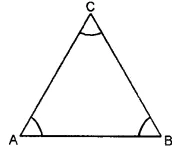
Names of the angles are :
∠ABC, ∠BAC and ∠ACB
(ii) In the given figure, four angles are formed.

∠ABC, ∠BCD, ∠CDA and ∠BAD
(iii) In the given figure, eight angles are formed.

Names of the angles are :
∠ABC, ∠BCD, ∠CDA, ∠BAD, ∠ABD, ∠DCB, ∠ADB and ∠BDC
Question 4.
Solution:
In given figure
(i) Points S and Q are in the interior of ∠AOB
(ii) Points P and R are in the exterior of ∠AOB.
(iii) Points A, O, B, N, T lie on ∠AOB.
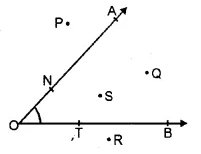
Question 5.
Solution:
(i) False
(ii) True
(iii) False
(iv) True
(v) False
Question 6.
Solution:
In the given figure, another name for :
(i) ∠1 is ∠EPB
(ii) ∠2 is ∠PQC
(iii) ∠3 is FQD
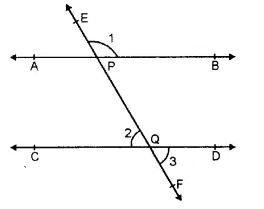
Hope given RS Aggarwal Solutions Class 6 Chapter 13 Angles and Their Measurement Ex 13A are helpful to complete your math homework.
If you have any doubts, please comment below. Learn Insta try to provide online math tutoring for you.
